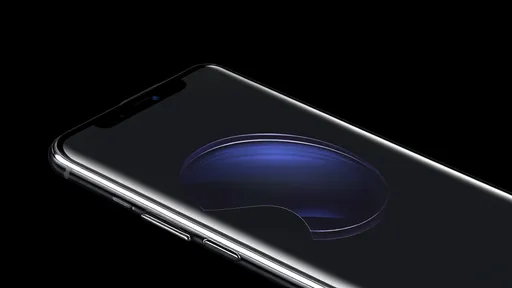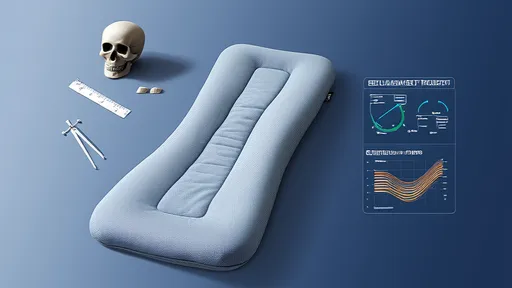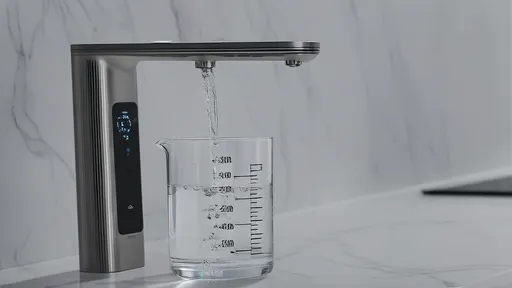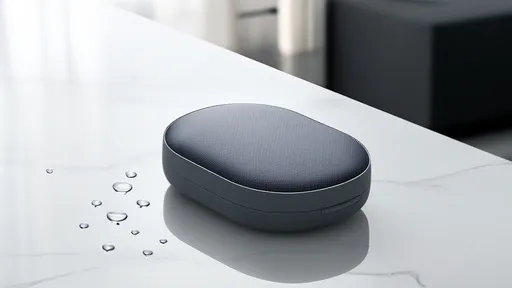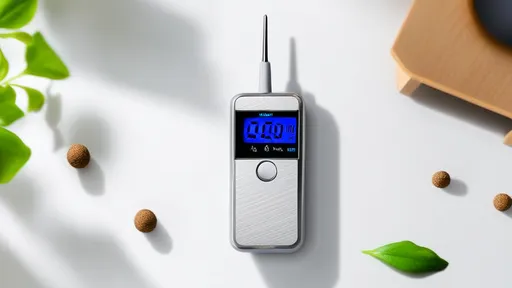For health-conscious individuals, tracking body composition has become an essential part of daily routines. Among the various tools available, smart body fat scales have gained significant popularity due to their convenience and ability to provide detailed metrics beyond just weight. However, to obtain the most accurate readings, understanding the optimal conditions for measurement is crucial—particularly when it comes to timing and preparation.
Morning measurements on an empty stomach are widely recommended by health professionals for assessing body fat percentage. The rationale behind this practice is rooted in the body’s natural physiological state after a night of fasting. Overnight, the body enters a relatively stable metabolic phase, free from the fluctuations caused by food intake, hydration, or physical activity. This consistency allows for more reliable comparisons over time, making it easier to track progress or identify trends.
When using a body fat scale in the morning, it’s important to ensure that the measurement is taken before consuming any food or beverages, including water. Even small amounts of liquid can temporarily alter the body’s water composition, which may skew the impedance-based readings that most smart scales rely on. Additionally, avoiding strenuous exercise before measuring is advisable, as muscle inflammation and fluid shifts can also impact results.
Consistency in measurement conditions cannot be overstated. Factors such as room temperature, humidity, and even the surface on which the scale is placed can influence readings. For the most accurate tracking, users should aim to measure themselves at the same time each day, under similar environmental conditions. Wearing minimal clothing—or the same type of clothing—during each session further reduces variables that could affect the data.
Another critical consideration is the technology behind body fat scales. Most consumer-grade devices use bioelectrical impedance analysis (BIA), which sends a low-level electrical current through the body to estimate fat percentage based on resistance. While BIA is convenient, it is not as precise as clinical methods like DEXA scans or hydrostatic weighing. Nevertheless, when used correctly—especially under fasting conditions—it can provide valuable insights into trends and relative changes in body composition.
Interpreting the data from a body fat scale requires an understanding of normal fluctuations. Daily variations of up to 1-2% in body fat readings are common due to factors like hydration levels, glycogen stores, and hormonal changes. Rather than focusing on day-to-day numbers, users should look at weekly or monthly averages to gauge true progress. This approach helps mitigate frustration over minor discrepancies that may arise from temporary physiological shifts.
Hydration plays a pivotal role in the accuracy of body fat measurements. Since BIA relies on electrical conductivity, which is influenced by water content, dehydration or overhydration can lead to misleading results. For instance, dehydration may cause the scale to overestimate body fat percentage, while excessive water intake before measurement could have the opposite effect. Maintaining a balanced hydration routine—neither too much nor too little—is key to obtaining dependable readings.
Beyond body fat percentage, many smart scales provide additional metrics such as muscle mass, bone density, and visceral fat. While these figures can offer a more comprehensive view of health, they should be interpreted with caution. Not all scales are equally accurate for these secondary measurements, and some may rely more on estimations than actual data. Consulting with a healthcare professional or nutritionist can help users make sense of these numbers in the context of their overall health goals.
For those serious about tracking body composition, combining scale data with other assessment methods can yield a clearer picture. Skinfold calipers, circumference measurements, and progress photos are simple yet effective tools that complement the data from a body fat scale. This multi-faceted approach reduces reliance on a single metric and provides a more holistic view of physical changes over time.
It’s also worth noting that body fat percentage norms vary by age, sex, and fitness level. What constitutes a healthy range for one individual may not apply to another. Rather than fixating on achieving a specific number, users should focus on sustainable habits that promote overall well-being. Regular exercise, a balanced diet, and adequate sleep contribute far more to long-term health than any single measurement ever could.
In conclusion, while body fat scales are useful tools for monitoring changes in body composition, their effectiveness hinges on proper usage. Morning measurements taken on an empty stomach, under consistent conditions, provide the most reliable data. By understanding the limitations of the technology and interpreting results in context, users can harness these devices to support their health and fitness journeys meaningfully.
The hum of idling engines, the faint scent of exhaust, and the endless sea of brake lights stretching toward the horizon—highway traffic jams are an inevitable reality for millions of drivers. While being stuck in gridlock is frustrating, it also presents an unexpected opportunity: a chance to stretch, move, and counteract the stiffness that comes from prolonged sitting. For those who find themselves trapped in slow-moving or stationary traffic, a few simple stretches can make the wait far more bearable—and even beneficial for the body.
In the ever-expanding world of health supplements, choosing the right formulation can be as crucial as selecting the active ingredients themselves. The physical form of a supplement – whether it’s a capsule, tablet, liquid, or powder – influences not just how we take it, but how effectively our bodies absorb and utilize its nutrients. For consumers navigating this landscape, understanding these nuances can mean the difference between a product that works and one that merely sits on the shelf.
When it comes to achieving accurate weight measurements, the importance of placing your scale on a level surface cannot be overstated. Many users overlook this critical aspect, assuming that any flat area will suffice. However, even minor imbalances can lead to significant discrepancies in readings. Whether you’re using a digital or mechanical scale, ensuring proper ground alignment is essential for consistency and reliability.
The humble nose wire in face masks often goes unnoticed, yet it plays a pivotal role in achieving that perfect fit. While most consumers focus on filtration efficiency or breathability, the subtle art of nose bridge shaping remains an underappreciated aspect of mask-wearing. Mastering this technique can transform an ordinary mask into a customized protective barrier that seals tightly without causing discomfort.
The growing reliance on digital screens has led to an increased demand for products that claim to protect our eyes from harmful blue light. Among these, blue light screen protectors have gained significant popularity. These thin films, applied directly to the screens of smartphones, tablets, and computers, promise to filter out the high-energy blue light emitted by displays. But how effective are they really? A series of tests were conducted to evaluate their performance, and the results provide valuable insights for consumers.
The quest for the perfect night's sleep has led to numerous innovations in bedding technology, with memory foam pillows standing out as one of the most revolutionary. Unlike traditional pillows, memory foam adapts to the contours of the head and neck, providing customized support. However, not all memory foam pillows are created equal, and selecting the right height is crucial for optimal comfort and spinal alignment. The concept of a height adaptation formula for memory pillows has gained traction among sleep experts, offering a scientific approach to personalized sleep solutions.
The water purification industry has grown exponentially in recent years, driven by increasing awareness of water quality and health concerns. Among the various factors consumers consider when purchasing a water purifier, the flow rate—or the speed at which clean water is delivered—plays a crucial role. Unlike technical specifications such as filtration accuracy or contaminant removal rates, the flow rate directly impacts daily usability. A slow flow rate can frustrate users, while an excessively fast one might raise doubts about filtration effectiveness. Striking the right balance is essential for both manufacturers and consumers.
The running shoe industry has quietly undergone a quiet revolution in recent years, with manufacturers introducing innovative wear indicators that go far beyond the traditional "check the soles" advice. These new systems are transforming how runners monitor their footwear, potentially preventing injuries and extending the life of their gear. What began as simple tread patterns has evolved into sophisticated visual and tactile warning systems that communicate exactly when shoes need replacement.
The process of verifying organic certification codes through official websites has become increasingly important for consumers seeking authentic organic products. With growing concerns about food authenticity and labeling accuracy, understanding how to navigate these verification systems provides peace of mind and ensures purchasing decisions align with personal values.
When it comes to maintaining a healthy lifestyle, vitamins and supplements play a crucial role. However, many people overlook an important aspect of their efficacy: their shelf life after opening. Unlike unopened bottles, which have a clear expiration date, once a vitamin container is opened, its potency and safety can degrade faster than expected. Understanding how to calculate the post-opening shelf life of vitamins is essential for ensuring you reap their full benefits.
The science behind sun protection has evolved significantly over the years, and one of the most critical advancements has been the development of UPF (Ultraviolet Protection Factor) testing for sun-protective fabrics, including umbrellas. Unlike sunscreen, which is measured by SPF, UPF evaluates how effectively a fabric blocks ultraviolet radiation. For those who rely on sun umbrellas as their primary defense against harmful UV rays, understanding UPF testing methods is essential.
The healthcare technology sector has witnessed remarkable advancements in recent years, with smart pillboxes emerging as a crucial tool for medication management. Among the various features that enhance their functionality, waterproofing stands out as a critical aspect that ensures durability and reliability. Manufacturers are increasingly focusing on innovative waterproofing techniques to address the challenges posed by accidental spills, humidity, and even complete submersion in water.
For families caring for elderly loved ones with dementia or mobility challenges, GPS-enabled shoes have emerged as a game-changing safety solution. These innovative footwear options blend discreet tracking technology with everyday comfort, offering peace of mind without compromising dignity. As the silver tsunami reshapes demographics globally, such assistive technologies are transitioning from luxury to necessity in elder care.
In recent years, formaldehyde detectors have become essential household items for health-conscious families. However, the market is flooded with products of varying quality, making it challenging for consumers to distinguish between reliable devices and potential scams. Understanding where these detectors commonly fail can save buyers from wasting money on ineffective tools and protect their families from inaccurate readings.
For health-conscious individuals, tracking body composition has become an essential part of daily routines. Among the various tools available, smart body fat scales have gained significant popularity due to their convenience and ability to provide detailed metrics beyond just weight. However, to obtain the most accurate readings, understanding the optimal conditions for measurement is crucial—particularly when it comes to timing and preparation.




